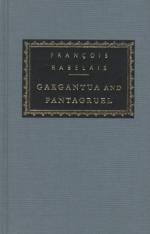As a matter of fact there is only one portrait of him that counts, that has more than the merest chance of being authentic, the one in the Chronologie collee or coupee. Under this double name is known and cited a large sheet divided by lines and cross lines into little squares, containing about a hundred heads of illustrious Frenchmen. This sheet was stuck on pasteboard for hanging on the wall, and was cut in little pieces, so that the portraits might be sold separately. The majority of the portraits are of known persons and can therefore be verified. Now it can be seen that these have been selected with care, and taken from the most authentic sources; from statues, busts, medals, even stained glass, for the persons of most distinction, from earlier engravings for the others. Moreover, those of which no other copies exist, and which are therefore the most valuable, have each an individuality very distinct, in the features, the hair, the beard, as well as in the costume. Not one of them is like another. There has been no tampering with them, no forgery. On the contrary, there is in each a difference, a very marked personality. Leonard Gaultier, who published this engraving towards the end of the sixteenth century, reproduced a great many portraits besides from chalk drawings, in the style of his master, Thomas de Leu. It must have been such drawings that were the originals of those portraits which he alone has issued, and which may therefore be as authentic and reliable as the others whose correctness we are in a position to verify.
Now Rabelais has here nothing of the Roger Bontemps of low degree about him. His features are strong, vigorously cut, and furrowed with deep wrinkles; his beard is short and scanty; his cheeks are thin and already worn-looking. On his head he wears the square cap of the doctors and the clerks, and his dominant expression, somewhat rigid and severe, is that of a physician and a scholar. And this is the only portrait to which we need attach any importance.
This is not the place for a detailed biography, nor for an exhaustive study. At most this introduction will serve as a framework on which to fix a few certain dates, to hang some general observations. The date of Rabelais’ birth is very doubtful. For long it was placed as far back as 1483: now scholars are disposed to put it forward to about 1495. The reason, a good one, is that all those whom he has mentioned as his friends, or in any real sense his contemporaries, were born at the very end of the fifteenth century. And, indeed, it is in the references in his romance to names, persons, and places, that the most certain and valuable evidence is to be found of his intercourse, his patrons, his friendships, his sojournings, and his travels: his own work is the best and richest mine in which to search for the details of his life.




